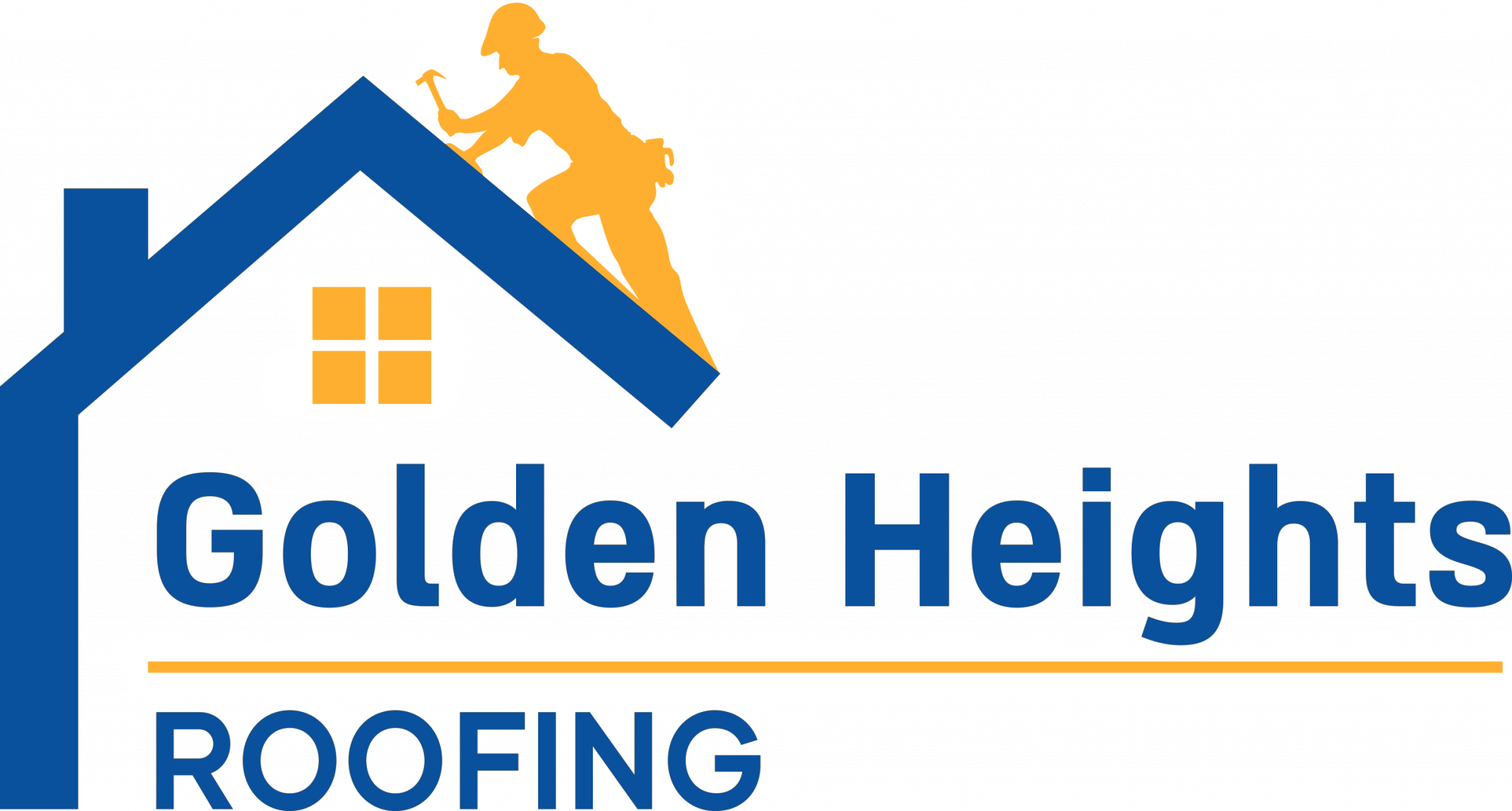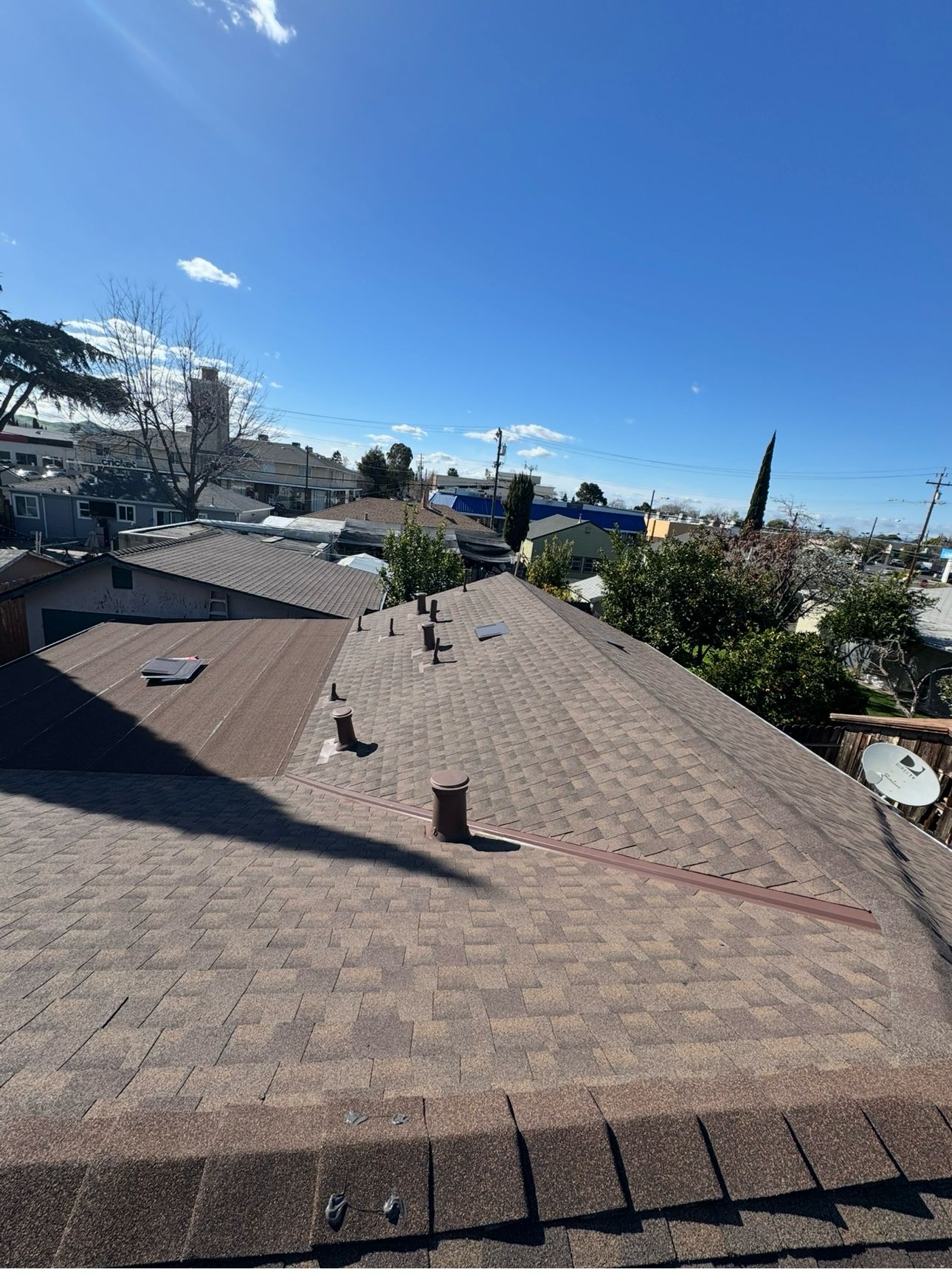
Have you ever wondered how long your asphalt shingle roof can withstand the test of time? For homeowners, a shingle roof’s endurance is not merely a statistic but a crucial defense against the unpredictable forces of nature. Understanding your roof’s life is thus crucial for securing your home’s future.
Golden Heights Roofing is a top roofing company in California that specializes in various types of roofing as well as asphalt shingle roof repair, installation, and roof replacement.
This guide breaks down the lifespan of different roof types. If you have any questions or need to learn more details after reading this detailed article, feel free to call us and get a free consultation – (510)-587-9501.
Lifespan of an Asphalt Shingle Roof: What to Expect
Asphalt shingles, widely used for residential roofs, have proven durability, with an expected lifespan ranging from 20 to 30 years when properly installed and maintained.
The life of roof shingles typically lies in the range of 20 to 30 years when properly installed and maintained. This duration can be influenced by various factors, including local climate conditions such as sun, wind, and storm damage exposure, the quality of the initial installation, and the level of maintenance your type of roofing receives. Exposure to harsh weather, proper ventilation, and insulation are also factors that affect the overall longevity of asphalt roofs.
Asphalt shingles can withstand most weather elements and provide reliable protection for your home.
Of course, regular maintenance, such as inspections for signs of wear and addressing issues promptly, is crucial for making your asphalt roof last longer. While they offer durability, proactive care and attention to potential issues will ensure that your asphalt roof lasts for its intended lifespan, providing effective shelter for your home.
The Lifespan of Different Asphalt Shingle Types
Whether you’re embarking on a new roofing project or contemplating an upgrade, understanding the distinct lifespans of different asphalt shingle types is key. In this guide, we delve into the nuances, providing valuable insights and addressing the pros and cons of each type of roof to help you make informed decisions and ensure your roof stands the test of time.
Asphalt Shingle Basics
Before we explore the lifespan variations, let’s lay the foundation by understanding the basics of asphalt shingles. Recognized for their affordability, versatility, and aesthetic appeal, the asphalt shingles type of roof comes in various options, each with its unique characteristics.
Traditional 3-Tab Shingles
Known for their simplicity and cost-effectiveness, traditional 3-tab type of asphalt shingles typically have a lifespan of 15 to 20 years If you are looking to save money, they are a budget-friendly option but also consider their shorter lifespan compared to more advanced alternatives.
Architectural Shingles
Architectural shingles, also known as dimensional or laminate shingles, boast a longer lifespan ranging from 20 to 30 years. Their durability is attributed to multiple layers and a textured appearance, providing enhanced resistance against the elements. Expect your asphalt architectural shingles to not only offer longevity but also add a touch of visual appeal to your roofing.
Premium Designer Shingles
At the top tier, premium designer asphalt shingles showcase both aesthetics and durability. They can last 30 years or more, while they emulate the appearance of natural materials, offering a luxurious and enduring roofing solution.
As you navigate the landscape of asphalt shingles, align the lifespan of your chosen type with your long-term roofing goals. Whether opting for the economical 3-tab, the robust architectural shingles, or the elegance of high-end designer shingles, understanding their respective lifespans ensures a well-informed decision for a roof that stands strong through the years.
Asphalt Shingle Roof vs Other Roof Types
An asphalt shingle type of roof, revered as the quintessential California favorite, not only offers a broad spectrum of styles and colors but also stands out for its cost-effectiveness.
Their versatility in complementing various architectural designs makes asphalt shingles a preferred choice for homeowners seeking an affordable yet visually appealing roofing solution. Installation is typically straightforward, leading to quicker project completion and making asphalt shingles an attractive option for those with time constraints.
In contrast, metal roofing emerges as a shimmering alternative with exceptional durability and longevity, offsetting their initial higher cost. These roofs’ reflective surfaces contribute to energy efficiency, reducing heat absorption and subsequently lowering energy bills.
Wood shakes and shingles, with their natural charm, offer an eco-friendly option, though regular maintenance is necessary to protect your roof’s longevity.
Meanwhile, concrete and clay tile roofs, known for their timeless elegance, provide a durable solution with various design options but require a sturdy roof structure due to their weight.
Finally, slate roofs epitomize luxury, boasting a roof lifespan that exceeds a century and adding significant value to upscale homes, albeit at a premium cost.
The choice between these roofing materials ultimately hinges on individual priorities, budget considerations, and the desired aesthetic impact on the home.
Factors That Determine How Long Your Asphalt Shingle Roof Lasts
Among the various roofing materials, asphalt shingles have gained popularity for their cost-effectiveness and versatility. However, extending the life of an asphalt shingle roof is influenced by several factors:
Quality of Materials
The longevity of an asphalt shingle roof is intricately tied to the quality of the materials used during installation. High-quality shingles are better equipped to withstand the impact of weather, UV rays, and other external factors.
Installation Craftsmanship
The expertise of the roofing contractor plays a pivotal role. A poorly installed roof, with improper alignment or insufficient ventilation, can significantly shorten its lifespan. Opting for a qualified and reputable roofing contractor ensures proper installation.
Climate and Weather Conditions
The climate in your region directly affects the durability of asphalt shingles. Intense sunlight, frequent temperature fluctuations, extreme temperatures, heavy rain, and high winds can all contribute to wear and tear. Regular roof inspection and timely repairs can mitigate damage caused by adverse weather conditions.
Ventilation and Insulation
Proper attic ventilation is crucial for preventing moisture buildup, which can lead to mold growth and shingle deterioration. Additionally, adequate insulation helps regulate temperature, reducing stress on the shingles and extending their lifespan.
Routine Maintenance
Regular maintenance, such as cleaning debris from gutters and inspecting for damaged or missing shingles, is essential. Promptly addressing minor issues prevents them from escalating into more significant problems that could compromise the integrity of the entire roof.
Exposure to Moss and Algae
Regions prone to moss and algae growth can experience accelerated shingle deterioration. Keeping the roof clean and applying treatments to deter moss and algae can contribute to a longer-lasting asphalt shingle roof.
Foot Traffic
Frequent foot traffic on the roof, whether for maintenance or other activities, can cause physical damage to the shingles. Minimizing unnecessary traffic helps preserve the integrity of the roofing material.
When Should You Replace Your Asphalt Shingles Roof?
Your roof will silently shield your home from the elements for years. Over time, though, even the most durable materials like asphalt shingles may show signs of wear. Deciding when to repair or replace your roof is a crucial decision that depends on a combination of visual cues, age, and the overall condition of your roofing system.
Age of the Roof
Asphalt shingle roofs have a typical lifespan of 20 to 30 years. If your roof is approaching or has surpassed this timeframe, consider a replacement even if there are no apparent issues. Aging shingles become more susceptible to damage from weathering and may lose their structural integrity.
Curling and Buckling Shingles
The visible condition of your shingles is a key indicator showing it’s time to replace or repair your roof to have peace of mind. If you notice shingles curling at the edges or buckling in the middle, it’s a sign that they have lost their ability to effectively protect your home. This can be caused by aging, weather exposure, or inadequate ventilation.
Granule Loss
Asphalt shingles are coated with granules that protect them from UV rays. If you find an excessive amount of granules in your gutters or notice bald spots on the shingles, it indicates significant wear. Granule loss can lead to shingle deterioration and compromise the roof’s ability to withstand the elements.
Visible Cracks or Breaks
Cracked or broken shingles expose your roof to water infiltration and can result from a combination of age and weathering. Damaged shingles compromise the roof’s integrity and should be addressed promptly.
Interior Signs of Water Damage
Water stains on your ceilings, mold growth in the attic, or dampness in your home’s interior could be indicators of a poor repair. Address these issues promptly to prevent further damage and avoid the need for extensive repairs.
Sagging Roof Deck
A sagging roof deck, often noticeable from the outside, may suggest structural damage. This could be due to prolonged exposure to water, a compromised underlayment, or issues with the roof’s supporting structure. Immediate attention is essential to prevent further damage.
Frequent Repairs
If you find yourself repeatedly patching up leaks or replacing damaged shingles, it may be more cost-effective in the long run to invest in a new roof. Persistent issues are often a sign that the overall integrity of the roofing system is compromised.
How Much Will a New Asphalt Shingle Roof Cost?
Determining the cost of a new asphalt shingle roof involves a nuanced evaluation of various factors.
Firstly, the size and pitch of the roof play a pivotal role, as larger or steeper roofs generally require more materials and labor, thus impacting the overall cost. The type and quality of asphalt shingles selected also contribute significantly, with 3-tab, architectural, and premium designer shingles varying in price.
Labor costs, contingent on regional variations and the intricacy of the installation, form another critical component of the overall expense. Additionally, the choice of roofing underlayment, ventilation system, and necessary accessories such as flashing and drip edges can influence the final cost.
Consider these factors and obtain personalized quotes from local roofing contractors for an accurate estimate tailored to your specific needs and circumstances. Contact our professional specialists today for a free estimate and expert guidance on your roofing project!
Regular Roof Maintenance Increases its Lifespan
While asphalt shingle roofs are known for their affordability and versatility, their lifespan is not predetermined. Homeowners can actively influence the longevity of their roofs by investing in quality materials, ensuring proper installation, and consistently addressing maintenance needs.
By understanding the factors that impact the lifespan of asphalt shingle roofs, homeowners can make informed decisions to protect their investment and maintain a secure and durable roofing system for years to come.
Routine roof maintenance serves as a proactive measure to safeguard your home’s first line of defense against the elements. By conducting regular inspections and addressing issues promptly, such as damaged shingles or potential leaks, homeowners can prevent minor problems from escalating into major structural issues.
Beyond preventing water damage, this practice also extends to mitigating the impact of weather and environmental factors, reinforcing vulnerable areas to withstand the test of time.
Moreover, by maximizing energy efficiency through proper insulation and ventilation, regular maintenance not only preserves the aesthetic appeal but contributes to a more sustainable and cost-effective home environment.
Maximize Your Roof Lifespan with Golden Heights Roofing
Elevate the life expectancy of your roofing investment with Golden Heights Roofing. Our comprehensive roof inspections are a fundamental aspect of our reputable roofing services, enabling us to proactively identify and address potential issues.
Tailoring maintenance plans to the unique characteristics of each roof, our specialists ensure that your roofing system is fortified against the challenges specific to your locale, promoting durability and resilience.
Our dedication to quality materials and skilled craftsmanship not only protects your property from the elements but also enhances its aesthetic appeal, creating a roofing solution that is both durable and visually pleasing. In line with our commitment to sustainability, we focus on energy-efficient solutions, optimizing insulation and ventilation to reduce environmental impact and lower utility costs.
Contact us today for a personalized consultation and let us elevate your roofing experience!
Frequently Asked Questions
How long do asphalt shingle roofs typically last?
The lifespan of shingle roofs varies, but on average, asphalt shingle roofs last between 20 to 30 years. Factors such as material quality, climate, and maintenance play significant roles in determining longevity.
What factors influence the lifespan of a shingle roof?
Several factors impact a shingle roof’s lifespan, including the quality of materials, installation craftsmanship, climate conditions, regular maintenance, and exposure to environmental elements.
Can I extend the lifespan of my asphalt shingle roof?
Yes, regular maintenance, prompt repairs, and proper ventilation can significantly contribute to extending the lifespan of your shingle roof. Taking proactive measures can prevent minor issues from turning into major problems.
What are signs that indicate my shingle roof needs replacement?
Curling or buckling shingles, granule loss, visible cracks or breaks, interior water damage, and a sagging roof deck are potential indicators that your shingle roof may need replacement. Consulting with a roofing professional for an inspection is recommended.
How often should I inspect my asphalt shingle roof?
Regular inspections are crucial. It is advisable to inspect your shingle roof at least twice a year, ideally during spring and fall, to catch any potential issues early on and address them promptly.
Can I replace damaged shingles individually, or should the entire roof be replaced?
In some cases, individual shingles can be replaced if the damage is localized. However, widespread or age-related issues may warrant a complete roof replacement for optimal performance and longevity.
How can I improve the energy efficiency of my shingle roof?
Ensuring proper insulation and ventilation are key to improving energy efficiency. Quality insulation materials and well-maintained ventilation systems contribute to a more energy-efficient shingle roof.
Is it worth investing in premium shingles for a longer lifespan?
Premium shingles often come with enhanced durability and longer warranties. While they may have a higher upfront cost, the long-term benefits, including extended lifespan and improved performance, can justify the investment.
How can Golden Heights Roofing help maximize my shingle roof’s longevity?
Golden Heights Roofing specializes in comprehensive roof inspections, personalized maintenance plans, and a commitment to quality materials and craftsmanship. Contact us for expert guidance on fortifying your shingle roof for long-lasting performance.


